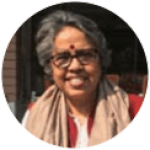
Frozen Shoulder
Frozen shoulder is a painful shoulder condition that is associated with stiffness and limitation in joint movements. There may be marked a reduction in forwarding elevation and rotational movements in the shoulder during various daily life activities: for example while combing hair, taking something from your back pocket, dressing undressing activities, etc. Shoulder pain treatment is aimed at relieving pain and preserving the range of motion of the shoulder.
Frozen shoulder patients usually present in the sixth decade of life and onset before the age of 40 is uncommon. The peak age is 56 and the condition occurs slightly more often in women than men. In 6 17% of patients, the other shoulder also gets affected, usually within five years and / or after the first has resolved. The non-dominant shoulder is slightly more likely to be affected. Due to differences in the type of pains, causes and reasons, shoulder pain treatment vary from person to person.
Though real reason not known but a clinical preponderance of frozen shoulder pain is noticed in diabetics. It may develop secondary to trauma to the shoulder joint, stroke, cardiac disorders, etc.
A patient with frozen shoulder pain traditionally progresses through three overlapping phases:
- Painful phase: Duration is 10-36 weeks. There are pain and stiffness around the shoulder with no history of injury. A nagging constant pain, which is worse at night, with little response to pain killers
- Adhesive phase: Follows the painful phase by 4-12 months of onset. The pain gradually subsides but stiffness gradually increases. Pain is apparent only at the extremes of movement. There is the gross reduction of all shoulder movements, with near-total obliteration of external rotation.
- Resolution phase: The resolution of the condition follows the adhesive phase after about 12-24 months of onset with spontaneous improvement in the range of movement. The mean duration from onset of frozen shoulder to the greatest resolution is observed by 30 months.
Treatment:
To relieve shoulder pain, pain relieving techniques like gentle shoulder mobilization, muscle releases, thermal therapy, electrotherapy, acupuncture, dry needling and kinesiology taping are used.
To restore full shoulder movement, techniques like shoulder joint mobilization and stretches, muscle release techniques and active-passive ROM exercises are instituted. With the increasing ROMstrengthening exercises are started to achieve control and maintain the restored range of movement. Simultaneously alternative mechanisms for compensating the loss of shoulder functions are taught till such time shoulder recovers.
Final goal is to restore a fully independent pain-free shoulder joint.











